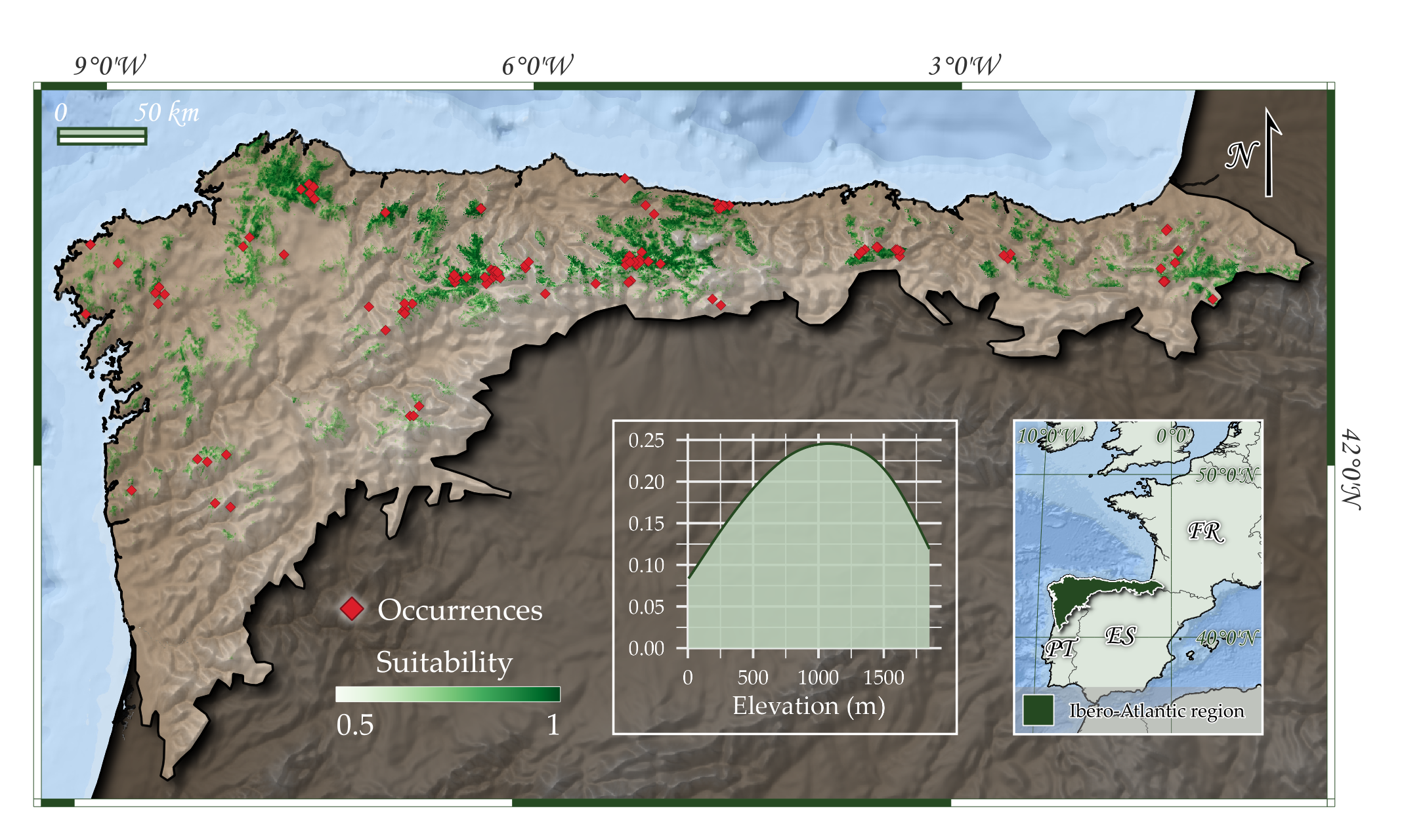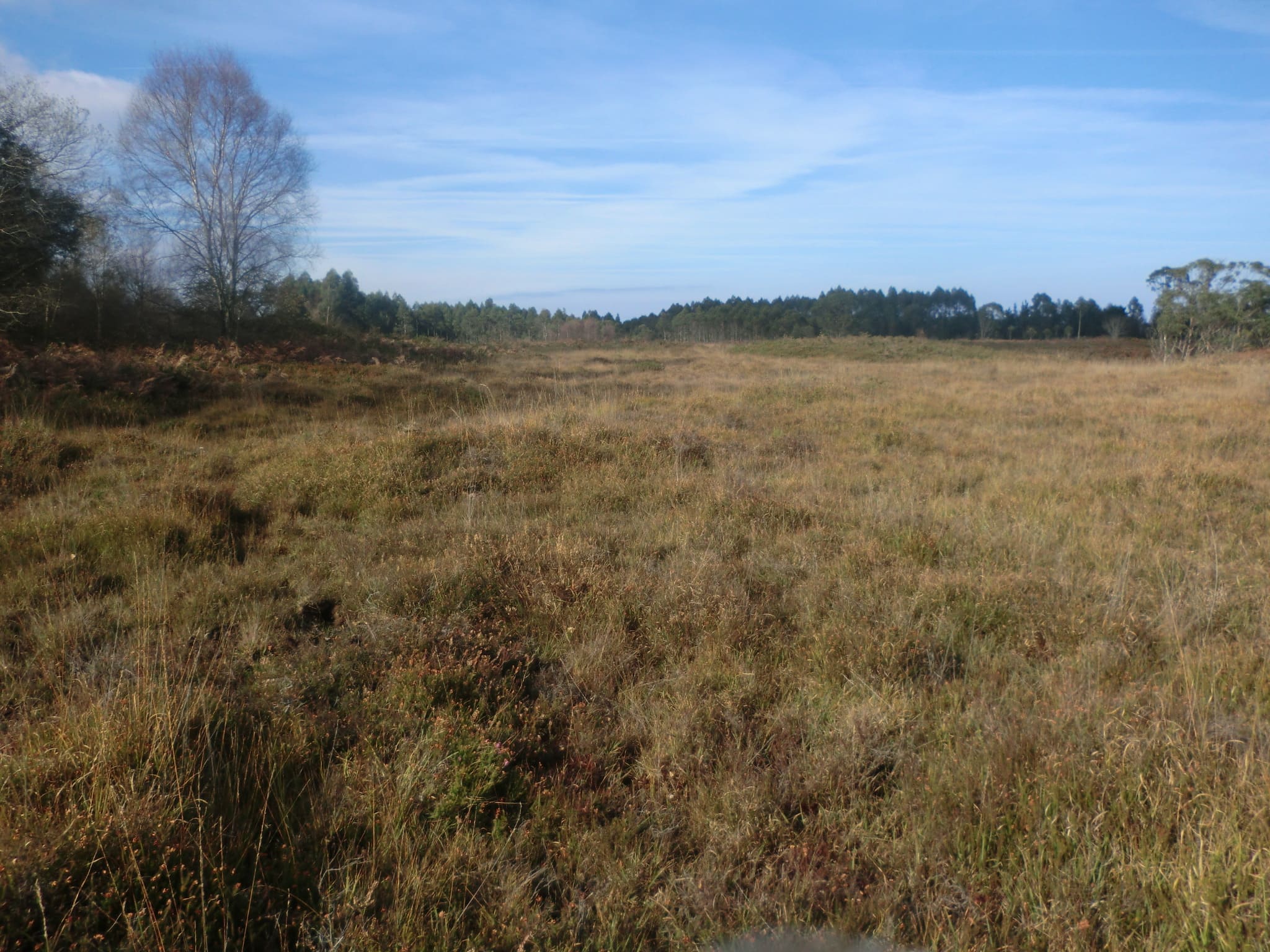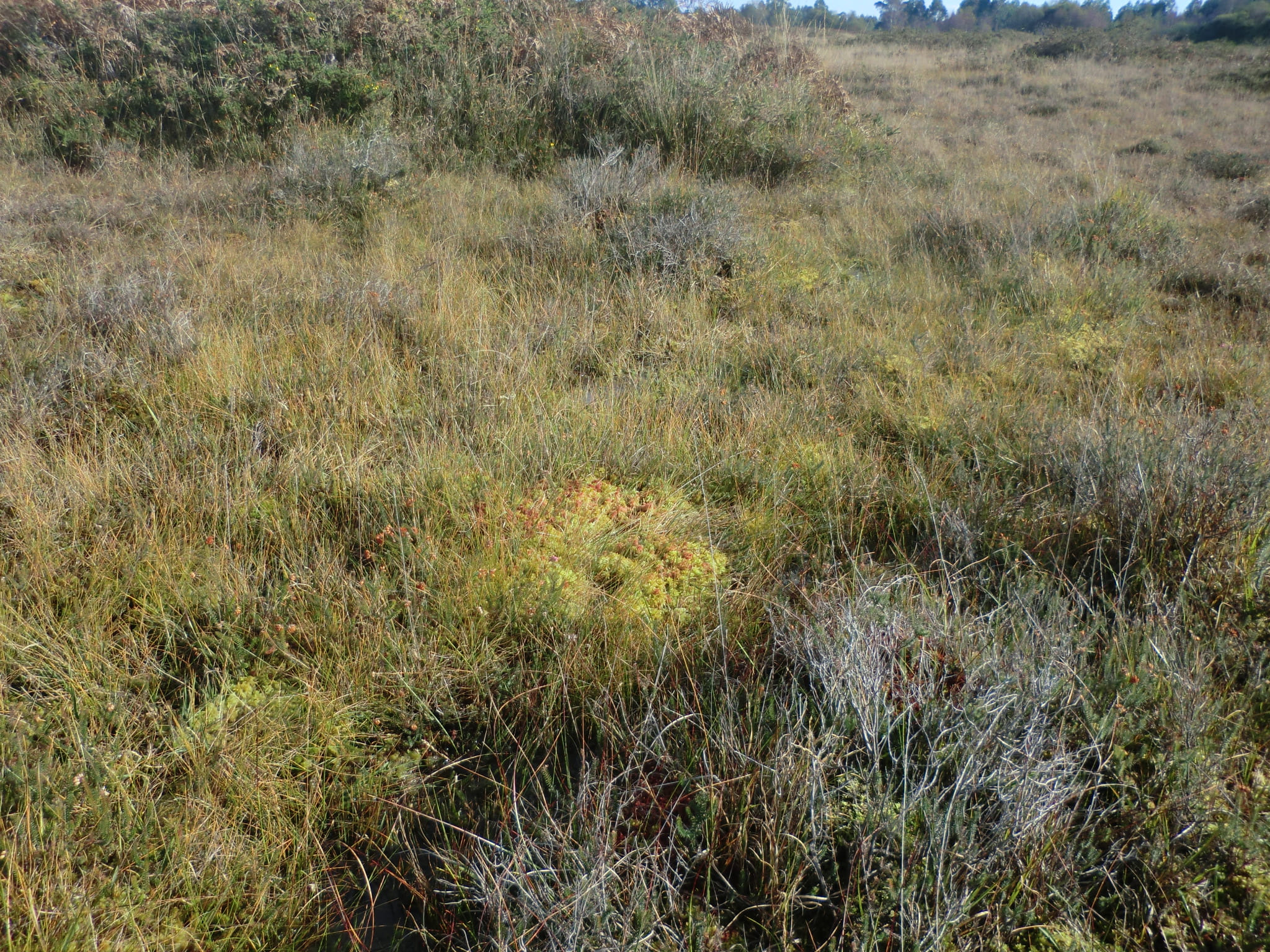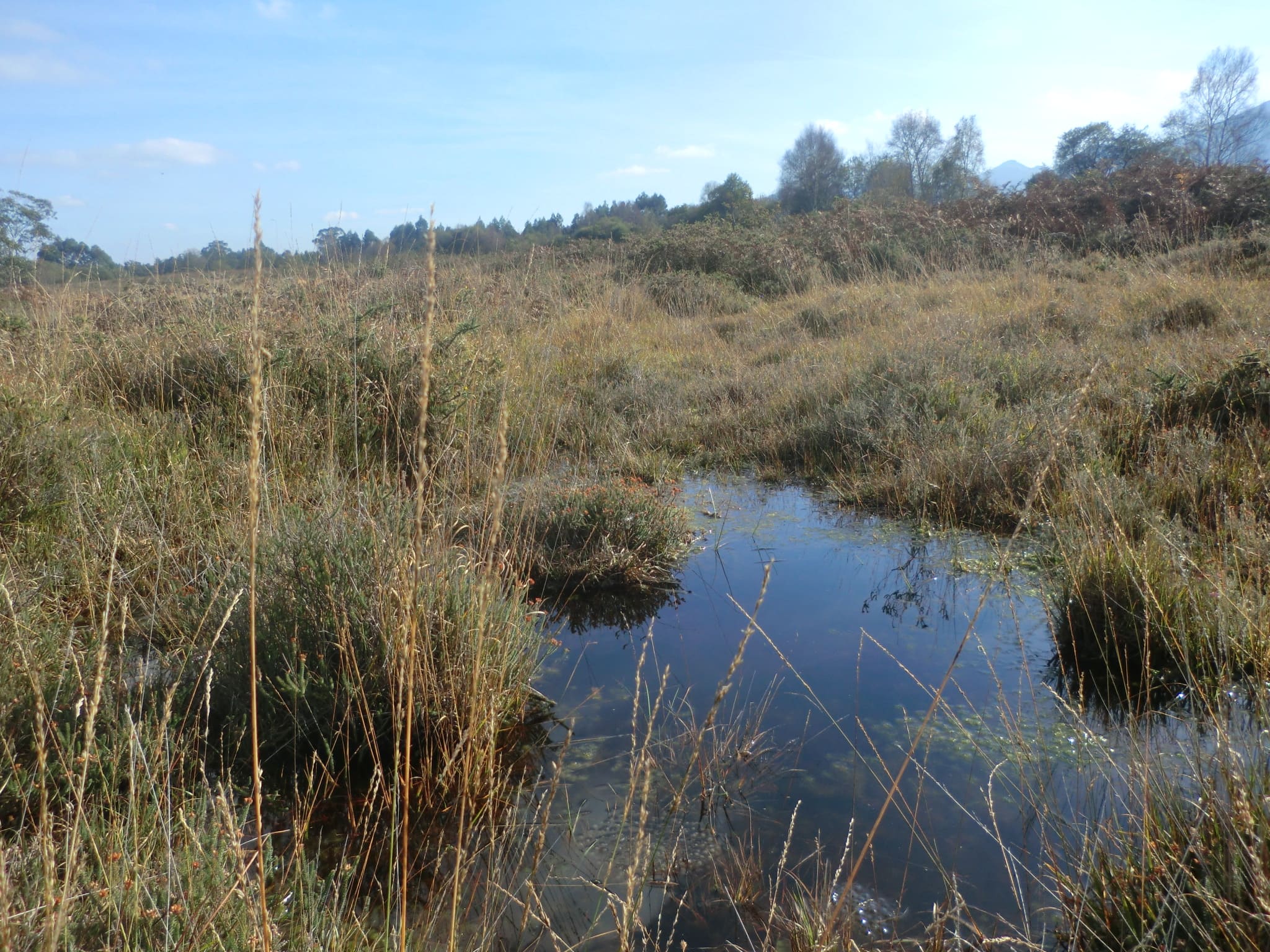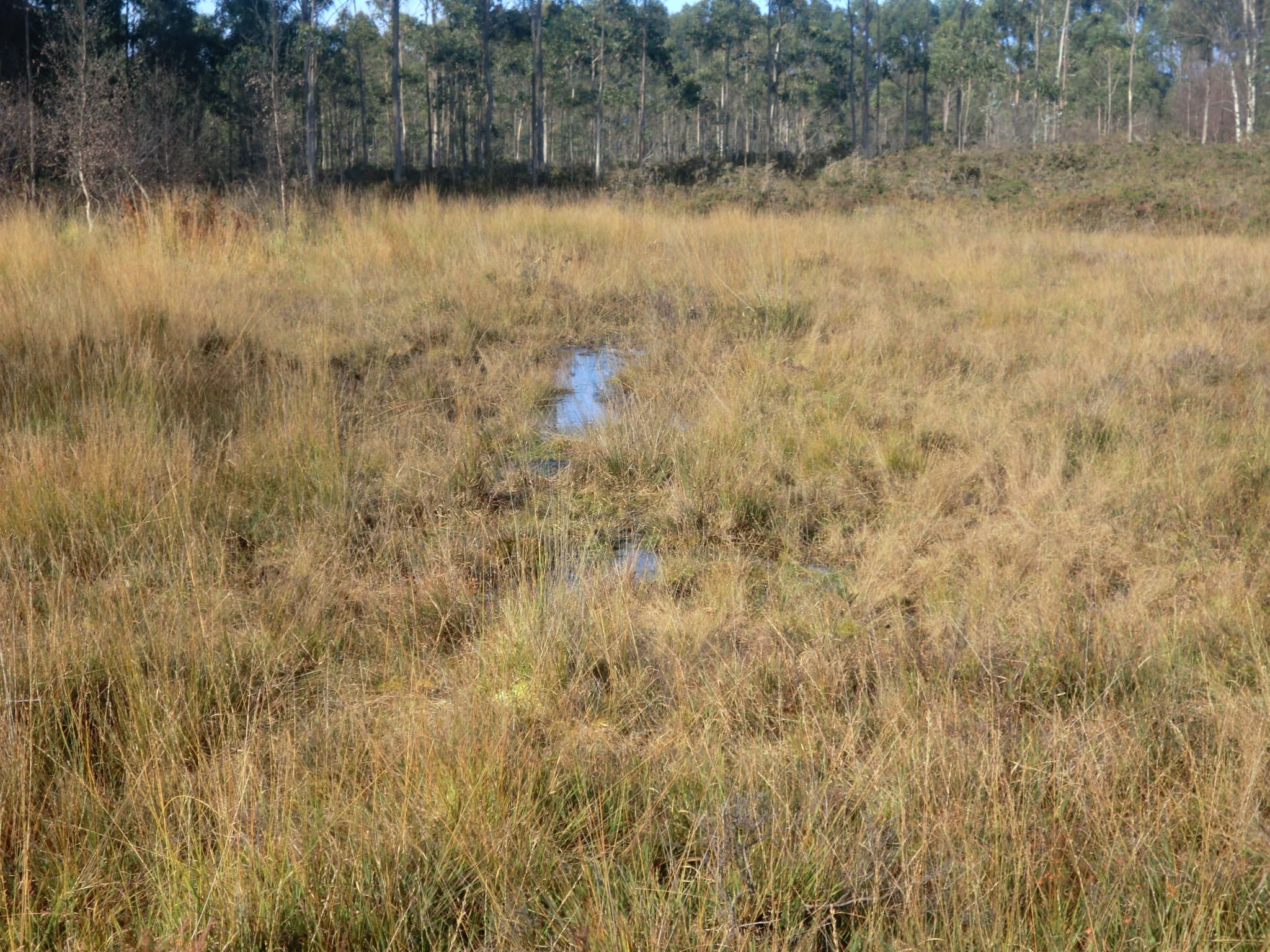Q11x Iberoatlantic raised bogs
Description
Oceanic bogs in slightly concave areas, with water input mostly derived from atmospheric moisture, dominated by strictly acidophilous heath and Sphagnum species. This is the most widespread bog habitat in the study area, generally occurring in mire complexes including fens, especially those of units Q222 and Q223. A regional level IV unit is created, since the mostly geomorphological units proposed by EUNIS are hardly appliable to our relatively small bog complexes. Bog vegetation may develop in mires not fed just by rain fallen in situ but by surface runoff through small basins excavated on impervious acidic rocks, giving rise to boggy valleys reminiscent of EUNIS block Q21 (“Oceanic valley mire). In terms of Annex I of the European Habitat Directive, some stands might be better included in 7120, and locally end ephemerally 7150 is represented in our bog complexes (protection provided in any case by inclusion in 7110*).
Floristic Composition
Frequent species
Indicator species
Regional distribution
